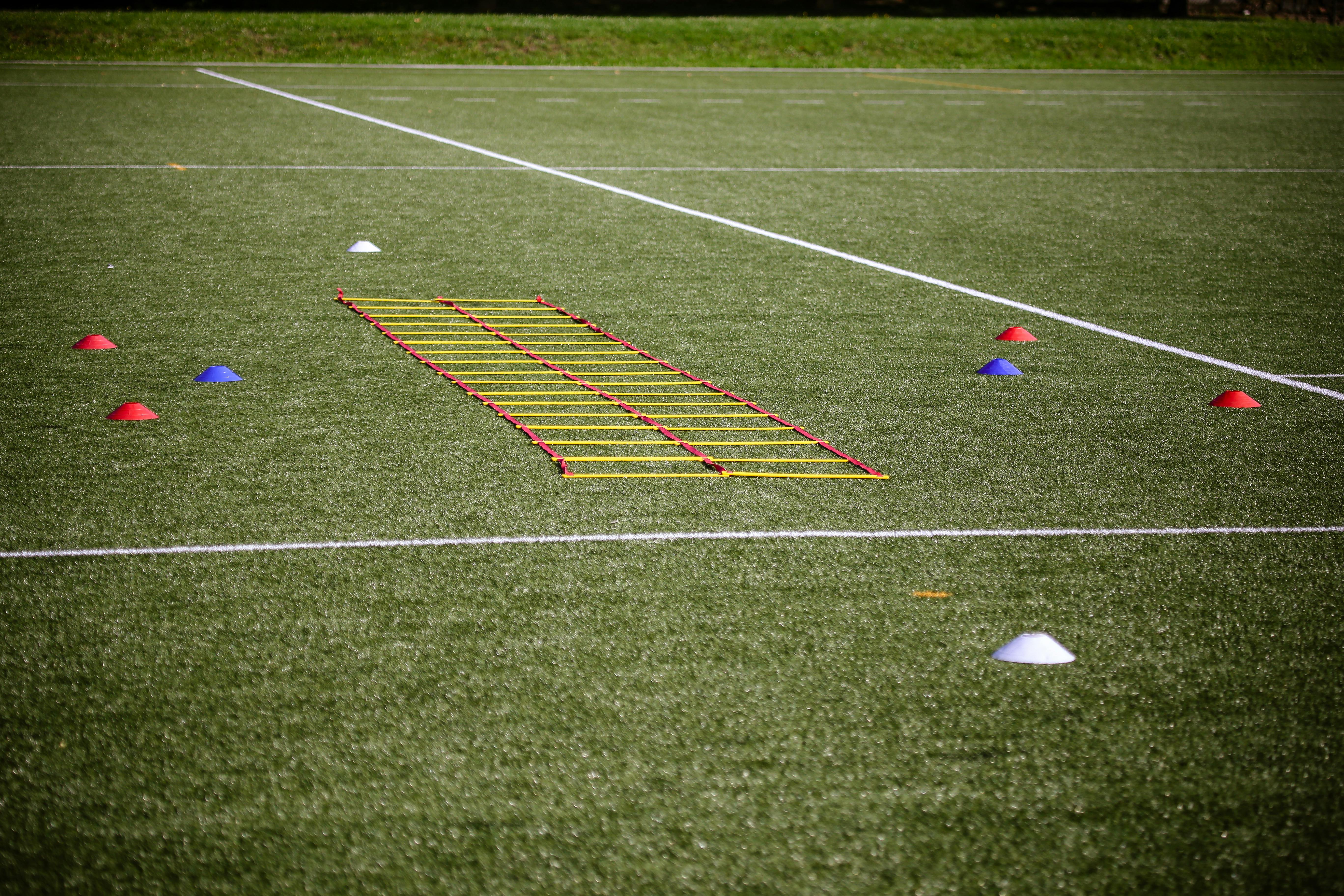Types of Football Formations: The Ultimate Tactical Guide

Introduction
Are you struggling to understand the tactical chess match that unfolds on the football pitch every game? Do you watch as teams shift their formations throughout a match but can't quite grasp why or how it impacts play? The consequences of tactical naivety can be devastating – missed opportunities, defensive vulnerabilities, and ultimately, defeats that could have been victories. This comprehensive guide to types of football formations will transform your understanding of the beautiful game and equip you with the tactical knowledge needed to analyze matches like a professional coach.
Understanding the Basics of Football Formations
Football formations are typically described using three or four numbers that represent how players are positioned across the field, excluding the goalkeeper. For example, in a 4-4-2 formation, there are four defenders, four midfielders, and two forwards.

Understanding formations goes beyond just knowing the numbers – it's about comprehending how players interact within these structures, the spaces they create and exploit, and how formations can fluidly change during different phases of play.
The tactical deployment of players through various types of football formations directly influences:
- Ball possession and control
- Defensive solidity
- Attacking potency
- Space creation and exploitation
- Team pressing capabilities
- Transition speed between defense and attack
As City Champions' tactical analysis shows, modern football has evolved beyond rigid formations to fluid systems that adapt continuously throughout a match.
The Evolution of Football Formations

The history of football formations reflects the evolving nature of the sport itself:
1. The Pyramid (2-3-5)
In the early days of football, teams favored attack-heavy approaches with five forwards, three halfbacks, and just two defenders. This formation dominated the game until the 1950s.
2. WM Formation (3-2-2-3)
Developed by Arsenal's Herbert Chapman in the 1930s in response to changes in the offside rule, this formation created a more balanced approach.
3. The Modern Era
From the 1960s onward, we've seen increasingly sophisticated systems:
- The 4-4-2 became the standard in the 1990s
- The 4-2-3-1 gained popularity in the 2000s
- The 4-3-3 returned to prominence with possession-based football
- The 3-at-the-back systems have experienced a renaissance in recent years
As the City Champions' football history section documents, each evolution in football formations came as a response to tactical innovations and rule changes.
Most Popular Types of Football Formations

4-4-2 Formation
The 4-4-2 remains one of football's most iconic formations, beloved for its balance and simplicity.
Key Characteristics:
- Four defenders providing a solid backline
- Four midfielders offering width and central control
- Two forwards working in partnership
Strengths:
- Balanced defensive and offensive capabilities
- Clear player roles and responsibilities
- Effective for direct, counter-attacking play
- Strong presence in wide areas
Weaknesses:
- Can be overrun in central midfield against 3-midfielder systems
- Requires disciplined positioning to avoid gaps
- Less flexibility in attack than some modern formations
Famous Examples:
Sir Alex Ferguson's Manchester United dominated English football with variations of the 4-4-2, while Diego Simeone's Atlético Madrid has shown the formation remains viable at the highest level in modern football.
The 4-4-2 can be modified to a 4-4-2 diamond, placing an additional player in central midfield at the expense of width – a variation that addresses some of the formation's traditional weaknesses.
4-3-3 Formation
The 4-3-3 has become synonymous with possession-based, attacking football. Read more.
Key Characteristics:
- Four defenders establishing a solid foundation
- Three midfielders controlling the center of the pitch
- Three forwards providing attacking width and penetration
Strengths:
- Superior numbers in central midfield
- Width in attack from wide forwards
- Flexibility to shift into different shapes during play
- Excellent for high-pressing systems
Weaknesses:
- Can leave fullbacks exposed if wide forwards don't track back
- Requires technically skilled midfielders
- Central striker can become isolated
Famous Examples:
Pep Guardiola's Barcelona revolutionized football with their 4-3-3 tiki-taka approach, while Jürgen Klopp's Liverpool demonstrated how the same formation can be adapted for a more direct, high-intensity pressing game.
For youth coaches looking to implement this system, City Champions' youth coaching provide excellent drills and exercises.
3-5-2 Formation
The 3-5-2 has experienced a significant resurgence in modern football, offering both defensive solidity and attacking numbers.
Key Characteristics:
- Three center-backs forming a defensive triangle
- Five midfielders (including wing-backs) providing width and control
- Two forwards working in tandem
Strengths:
- Extra defender for greater defensive solidity
- Wing-backs provide both width and defensive coverage
- Two strikers can create more goal-scoring opportunities
- Numerical advantage in midfield
Weaknesses:
- Wing-backs must be exceptionally fit and tactically disciplined
- Vulnerable to teams with quick, skilled wingers
- Requires specialized center-backs comfortable in a three
Famous Examples:
Antonio Conte's championship-winning teams at Juventus, Chelsea, and Inter Milan all utilized variations of the 3-5-2 to great effect, demonstrating the formation's viability at the highest levels.
4-2-3-1 Formation
The 4-2-3-1 has become one of the most popular formations in modern football, offering excellent balance and versatility.
Key Characteristics:
- Four defenders providing defensive width and security
- Two defensive midfielders offering protection and distribution
- Three attacking midfielders supporting the attack
- One striker leading the line
Strengths:
- Double pivot of defensive midfielders protects the defense
- Can dominate midfield areas
- Flexibility of the three attacking midfielders
- Clear defensive and offensive structure
Weaknesses:
- Lone striker can become isolated
- Requires technically skilled attacking midfielders
- Vulnerable to counter-attacks if full-backs push too high
Famous Examples:
José Mourinho's Champions League-winning teams often employed this formation, while Germany's 2014 World Cup triumph showcased its effectiveness at international level.
As detailed in City Champions' tactical innovations article, the 4-2-3-1 has become the formation of choice for teams looking to control games while maintaining defensive stability.
3-4-3 Formation
The 3-4-3 is perhaps the most attack-minded of the commonly used formations, sacrificing a midfielder for an additional attacker.
Key Characteristics:
- Three center-backs providing defensive coverage
- Four midfielders (including wing-backs) controlling width and central areas
- Three forwards offering attacking threat
Strengths:
- Superior numbers in attack
- Width from wing-backs complemented by wide forwards
- Defensive security from three dedicated center-backs
- Excellent for teams that want to dominate possession
Weaknesses:
- Can be overrun in midfield
- Extremely demanding on wing-backs
- Requires intelligent movement from the front three
Famous Examples:
Antonio Conte's Chelsea won the Premier League using a 3-4-3, while Thomas Tuchel's Champions League win with Chelsea came using variations of this system.
Specialized Formations for Different Scenarios

Beyond the standard formations, coaches develop specialized systems for particular game situations:
Defensive Formations
When protecting a lead or facing a superior offensive team, coaches might adopt more defensive formations like:
- 5-4-1: Maximizing defensive numbers
- 4-5-1: Strengthening the midfield shield
- Low Block 4-4-2: Condensing space between defensive lines
Attacking Formations
When chasing a game or facing weaker opposition, more aggressive structures emerge:
- 3-3-4: Sacrificing a midfielder for an extra attacker
- 2-3-5: A modern adaptation of the classic pyramid
- High Press 4-2-4: Using aggressive forward positioning to win the ball high
How to Choose the Right Formation for Your Team

Selecting the optimal formation depends on multiple factors:
1. Player Capabilities
The formation should maximize your players' strengths and minimize their weaknesses. A team with exceptional wing players might benefit from a 4-3-3, while a squad with limited fullbacks might prefer a three-at-the-back system.
2. Strategic Objectives
Your team's playing philosophy should inform formation choice:
- Possession-based: Consider 4-3-3 or 3-4-3
- Counter-attacking: 4-4-2 or 3-5-2 might be ideal
- Pressing systems: 4-3-3 or 4-2-3-1 provide good structures
3. Opponent Analysis
Top coaches regularly adapt formations based on the opposition:
- Against teams with dangerous wingers, a back three or five offers additional width
- When facing strong central midfielders, a three-man midfield provides numerical balance
- Against teams that play with two strikers, three center-backs can be advantageous
4. Game Situation
Formations often change within a single match based on:
- Score: Leading teams might switch to more defensive structures
- Time remaining: Desperate teams adopt more attacking shapes
- Red cards: Numerical disadvantages require formation adaptations
The City Champions' coaching mental toughness guide offers excellent insights into matching right mindset to your team's situation.
Training Drills to Master Football Formations

Implementing formations effectively requires deliberate practice through specifically designed drills:
1. Shadow Play
Players move through formation shapes without opposition, developing positional awareness and understanding.
2. Phase of Play Training
Isolate specific game situations (build-up, attacking third, etc.) and practice formational structures.
3. Small-Sided Games with Conditions
Use conditioned games (limited touches, designated zones) to emphasize formation principles.
4. Video Analysis
Review professional matches focusing on teams that excel in your chosen formation.
5. Position-Specific Training
Develop the unique skills required for each position within your formation.
For youth coaches, City Champions' training session planner offers formation-specific exercises suitable for different age groups.
Famous Teams and Their Signature Formations
Throughout football history, certain teams have become synonymous with specific formations that defined their era:
Ajax's Total Football (4-3-3)
Rinus Michels and Johan Cruyff's Ajax revolutionized football with a fluid 4-3-3 where players constantly interchanged positions while maintaining the formation's structure.
AC Milan's Sacchi Revolution (4-4-2)
Arrigo Sacchi's Milan side of the late 1980s employed a pressing 4-4-2 with unprecedented defensive organization and zonal marking.
Barcelona's Tiki-Taka (4-3-3)
Pep Guardiola's Barcelona dominated world football with a possession-based 4-3-3 characterized by short passing and intelligent movement.
Germany's 2014 World Cup Winners (4-2-3-1)
Joachim Löw's World Cup-winning side showcased a perfect execution of the 4-2-3-1, balancing defensive solidarity with attacking creativity.
Leicester City's Miracle Season (4-4-2)
Claudio Ranieri proved the 4-4-2's enduring viability by winning the Premier League with a counter-attacking version of this classic formation.
The City Champions' legendary teams analysis provides deeper insights into how these iconic sides implemented their formations.
The Future of Football Formations

As football continues to evolve, several trends in formation development are becoming apparent:
1. Positional Fluidity
Modern formations increasingly focus on fluid positional rotations rather than fixed positions, with players trained to occupy multiple roles.
2. Hybrid Systems
Top coaches are developing formations that can seamlessly shift between different structures during various phases of play.
3. Data-Driven Adaptations
Advanced analytics are informing more nuanced formation choices, with teams adopting structures designed to exploit specific statistical advantages.
4. Individual Tactical Intelligence
The future emphasizes players who can make independent tactical decisions within the formation framework rather than rigidly following predetermined patterns.
Frequently Asked Questions
What are the best formations in soccer?
There's no definitively "best" formation in soccer as effectiveness depends on player personnel, team philosophy, and opposition. However, the most consistently successful formations in modern football include the 4-3-3 for possession-based teams, 4-2-3-1 for balanced approaches, and 3-5-2 for teams seeking defensive solidarity with counter-attacking potential.
Which one is the most famous formation in history of football?
The 4-4-2 formation is arguably the most famous in football history. It dominated the sport from the 1990s through the early 2000s and remains the formation most casual fans recognize. Its perfect balance of defense, midfield, and attack made it the standard formation for decades across leagues worldwide.
How to learn soccer formations?
To learn soccer formations effectively:
- Study the basic principles behind common formations (4-4-2, 4-3-3, etc.)
- Watch professional matches focusing specifically on team shape
- Use diagrams and virtual simulation tools to understand player positioning
- Practice with small-sided games emphasizing positional discipline
- Work with a coach who can explain the tactical principles underlying each formation
What formation did Pep Guardiola's Barcelona use?
Pep Guardiola's Barcelona primarily used a 4-3-3 formation that featured a false nine (often Lionel Messi) dropping deep from the center-forward position. This created numerical advantages in midfield while confusing opposing defenders about marking responsibilities.
Are three-at-the-back formations becoming more popular?
Yes, three-at-the-back formations have experienced a significant resurgence in popularity over the past decade. Coaches like Antonio Conte, Thomas Tuchel, and Pep Guardiola have all employed variations of 3-4-3 or 3-5-2 with great success at the highest levels of the sport.
What formation is best for teams that want to counter-attack?
The 4-4-2 and 3-5-2 formations are particularly well-suited for counter-attacking teams. Both provide solid defensive structures while allowing for quick transitions through direct passing to forwards or exploitation of wide areas through wing-backs or wingers.
How do formations change during a match?
Formations continuously evolve during matches based on game state (winning/losing), player fatigue, opposition tactics, and specific situations (defending a set piece, pressing high). Modern teams are trained to seamlessly transition between multiple formations within a single match.
What's the difference between 4-3-3 and 4-5-1?
While both formations use four defenders, the difference lies in attacking intent. A 4-3-3 commits three players to forward positions, while a 4-5-1 drops two of those forwards into midfield for greater defensive solidarity and midfield control, often at the expense of attacking threat.
Which formation is best for youth teams?
For youth development, formations that maximize touches and technical development are ideal. The 4-3-3 is often recommended as it provides clear positional responsibilities while encouraging attacking play. However, youth coaches should prioritize skill development over rigid tactical systems.
How important is formation compared to other tactical elements?
While formations provide the fundamental structure, they're just one component of team tactics. Player quality, team chemistry, pressing triggers, transition strategies, and set-piece organization are equally important tactical elements that work alongside the chosen formation.
Conclusion
Understanding the various types of football formations is essential for truly appreciating the tactical depth of the beautiful game. From the classic 4-4-2 to the modern 3-4-3, each formation offers unique advantages and challenges that smart coaches exploit based on their players' strengths and weaknesses.
The most successful teams don't rigidly adhere to a single formation but instead develop tactical flexibility allowing them to adapt to different opponents and game situations. As football continues to evolve, we can expect formations to become increasingly fluid, with the lines between traditional positions continuing to blur.
Whether you're a coach seeking tactical inspiration, a player looking to better understand your role, or a fan wanting to enhance your appreciation of the game, mastering the principles behind different formations will transform how you experience football.
For more tactical insights, coaching resources, and football analysis, be sure to explore City Champions' comprehensive football guides and tactical masterclasses.
This article was written by an experienced football analyst with over a decade of tactical analysis experience. For personalized formation advice or coaching resources, contact our team at City Champions.
Recent News
How to Improve Your Speed and Agility on the Field (Even If You're Not the Fastest Player)
link